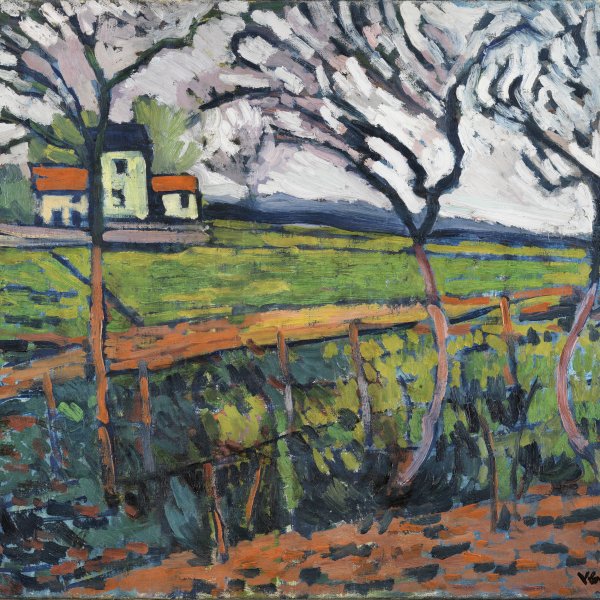Blue vase with flowers
Vlaminck's Fauvist style found its greatest expression in the many landscapes he painted around Bougival and Chatou, often in the company of his friend and fellow-Fauve, André Derain (1880-1954). From 1904 to 1907, the height of the brief explosion of the Fauvist style, Vlaminck asserted: "I wanted to burn down the École des Beaux-Arts with my cobalts and vermilions and I wanted to express my feelings with my brushes without troubling what painting was like before me." Nonetheless, his "revolution" was not self-generated: his painting was much influenced by Van Gogh and, to a lesser extent, by Gauguin and Seurat. Van Gogh was his essential mentor from 1904 to 1907, after which the "constructive" influence of Cézanne began to tame the Fauvist extravagances. Landscapes predominated in the Fauvist explosion. Nonetheless, portraits and still-lifes punctuated the Fauvist years at intervals. And the seemingly arbitrary brushstrokes, colouristic extremes and compositional elisions inevitably spilt over into Vlaminck's still lifes. So it is with this painting of flowers in a blue vase. The identity of the flowers is subsumed in an equivalence of one-colour brushstrokes, a separate rhythmic pattern. Indeed, these brushstrokes, provocative and elided, deny any descriptive function as precise evokers of flowers: so much so, that it becomes extremely difficult to name any of the flowers. And the overall surface pattern is further emphasised by what appears to be the reflections below the blue vase of part of the flowers and the background, thus suggesting a glass surface rather than the expected wooden table-top. And all this despite the interrupted diagonal of the supporting surface.
The painting is generally dated to 1906, the highpoint of the Fauvist period.
Ronald Pickvance







